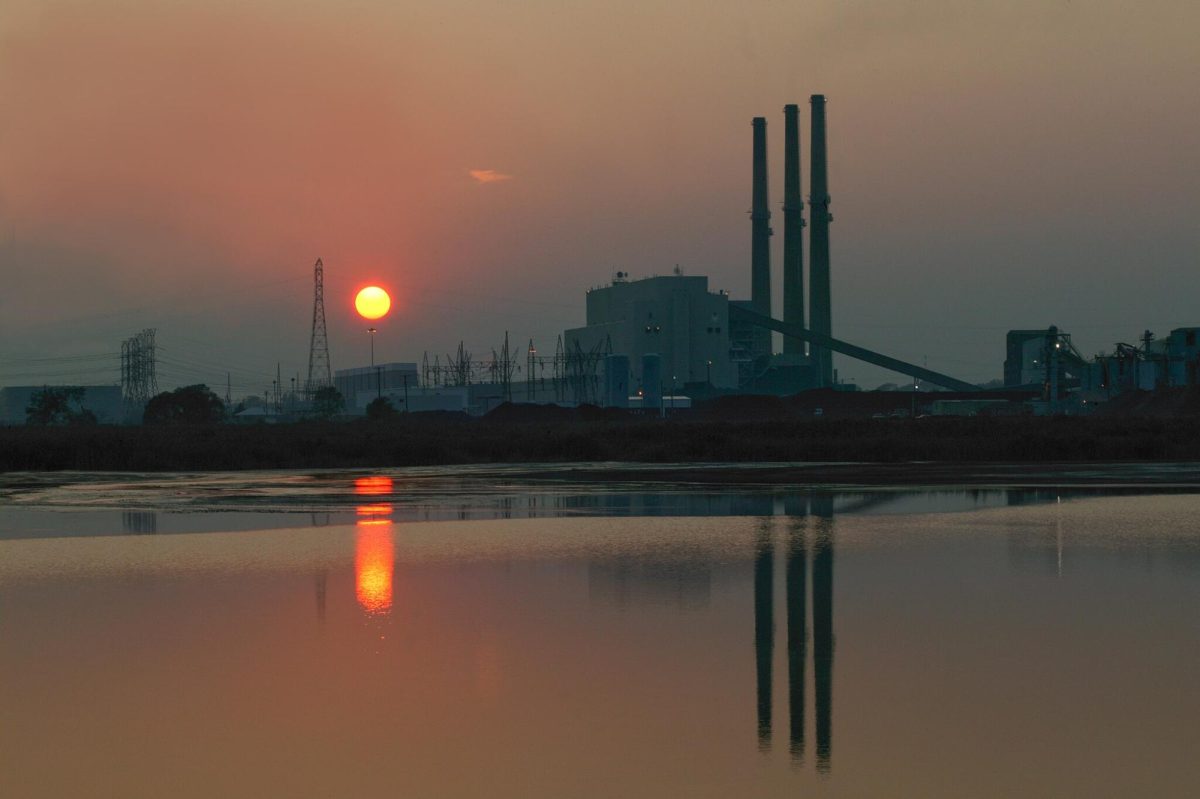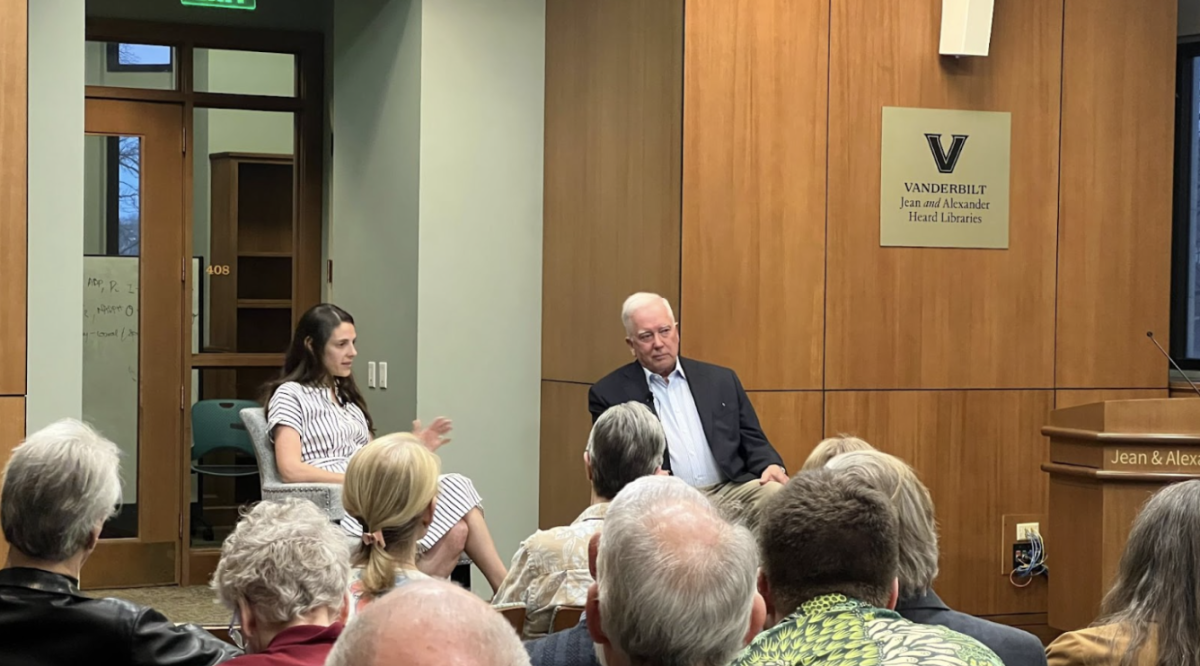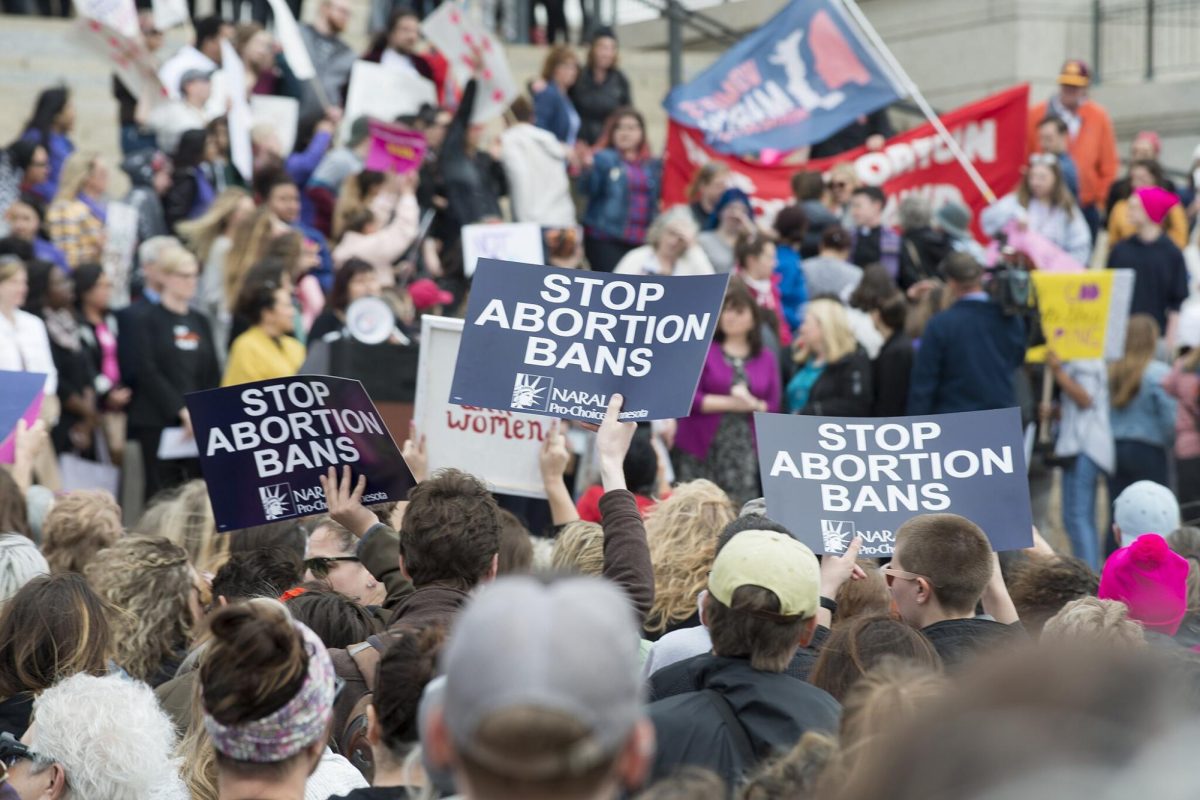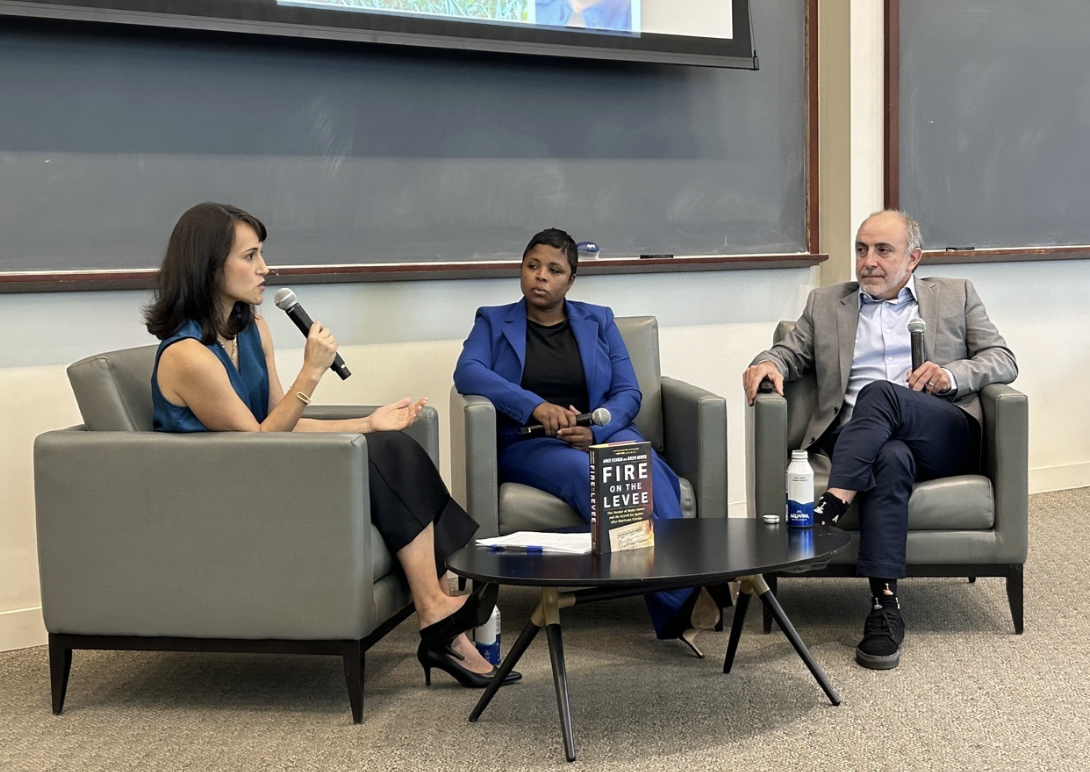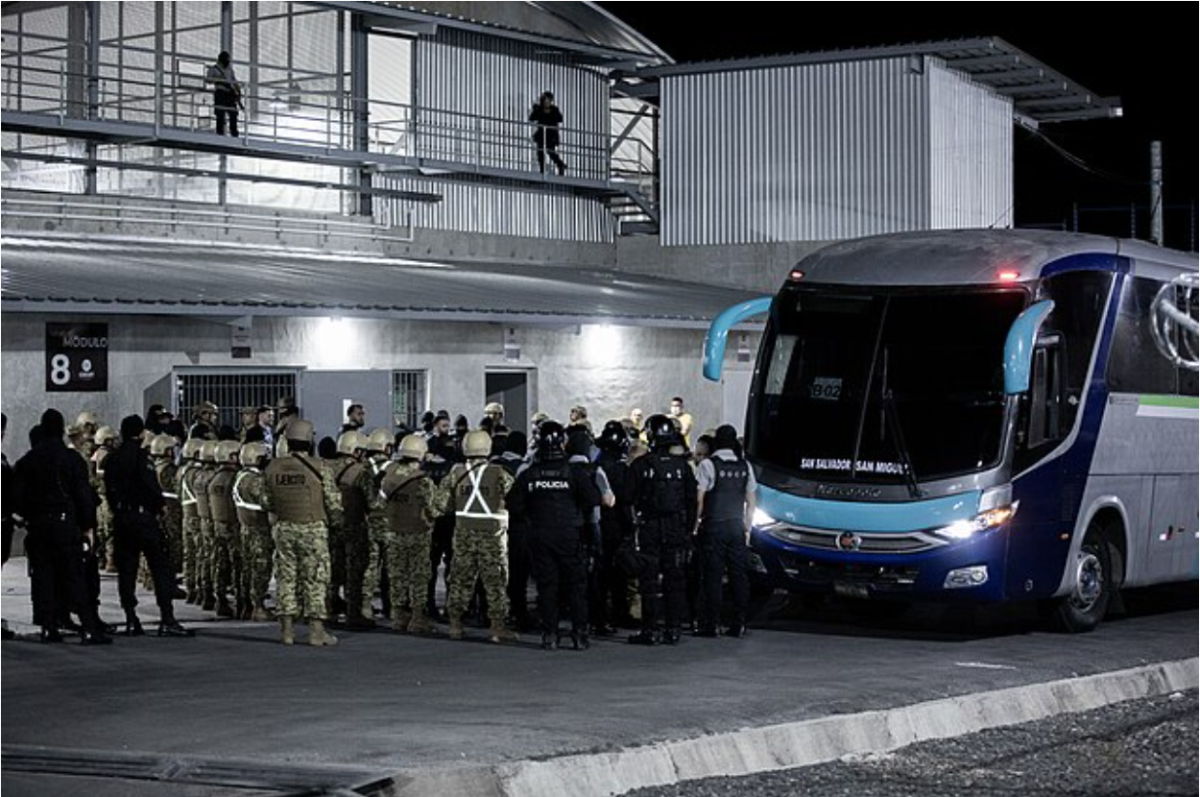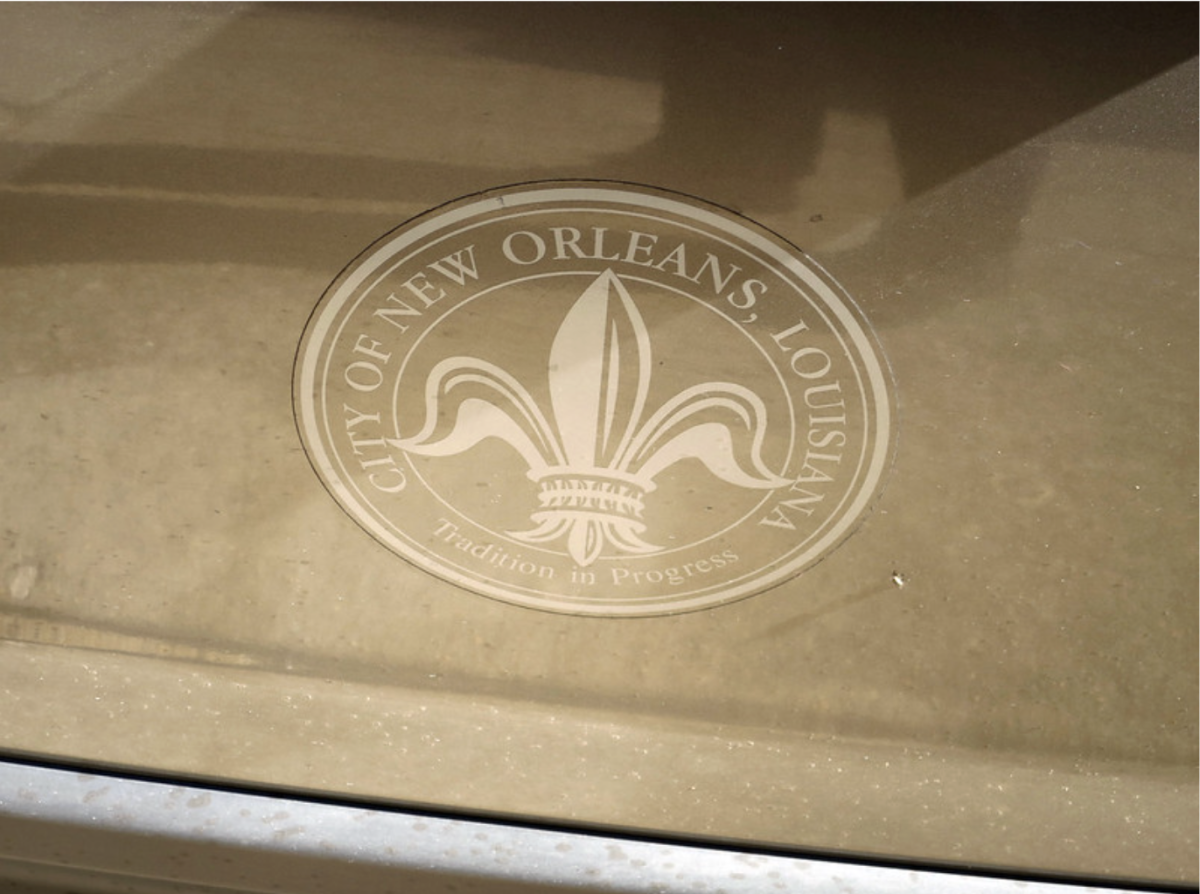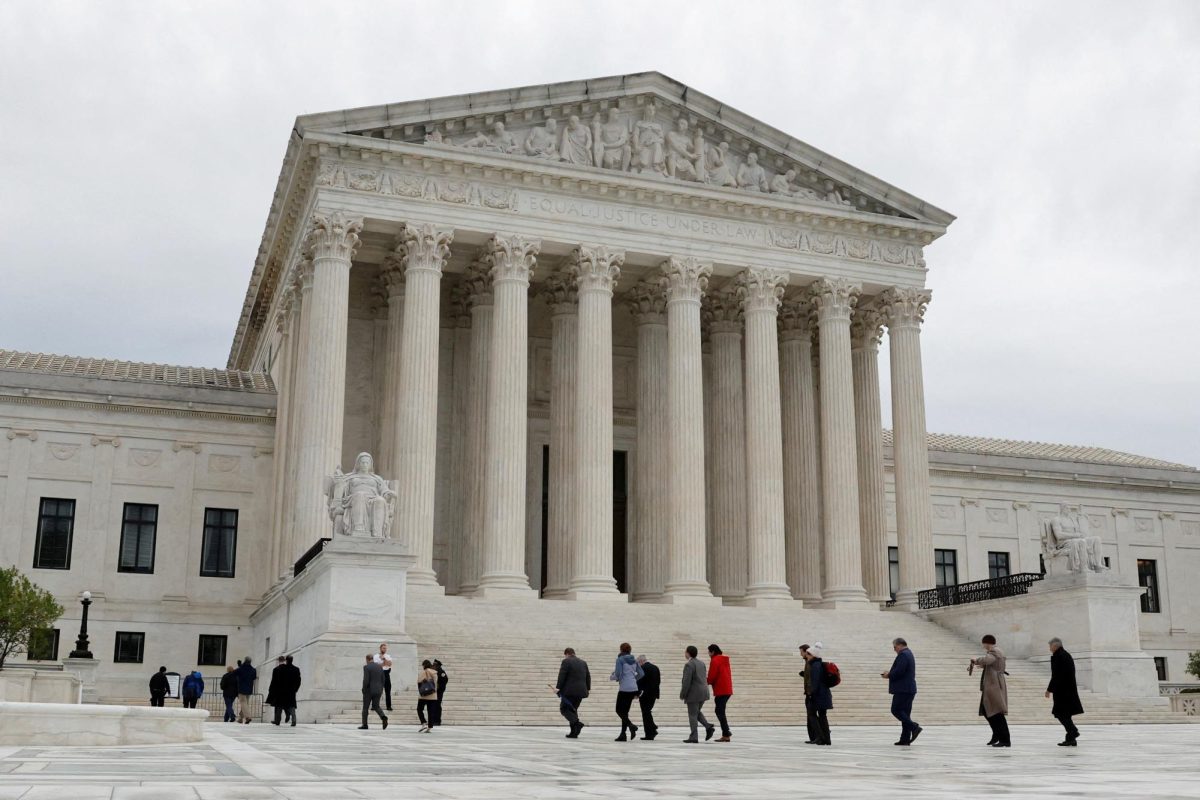On a heat map produced by The Environmental Protection Agency (EPA), an amorphous blob radiates out from the medical supply cleaning facility Sterilization Services of Tennessee blanketing Mallory, Tennessee, a residential neighborhood in South Memphis. If your home falls within the boundaries of the blob, the EPA declares, you have been exposed to invisible but toxic Ethylene Oxide (EtO) gas for the past 40 years.
A separate map, maintained by investigative journalists at ProPublica, uses blocky parallelograms to demarcate areas exposed to cancer-causing pollution from industrial sites. The parallelogram emanating from the Stella Jones coal-tar distillation plant, also in South Memphis, contains shades of deep red, indicating pollution levels that bear an excess cancer risk of 4.1 times the federal limit. The Stella Jones pollution is most intensely concentrated on a sickle bend in the Harbor Canal abutting South Memphis. Layering the EtO and Stella Jones pollution maps produces a Venn diagram overlap of carcinogenic radii over Mallory.
Lettie White, Rose Sims, and Ural Grant reside in Mallory, each living with a different stage of cancer. “At first I thought it was just me. But then when I found that so many people in the neighborhood had cancer, then I said it must be something to it,” one resident stated in an interview with Fox13 Memphis.
The local activist group Memphis Community Against Pollution (MCAP) rallied community members, calling for Sterilization Services of Tennessee to be shuttered. “We deserve clean air just like everybody else,” said MCAP President KeShaun Pearson. Pearson further decried the industrial pollution and environmental racism that “continue to slow lynch this community.” Pearson’s aunt, the longtime owner of a beauty salon a few blocks from Sterilization Services of Tennessee, is being treated for breast cancer.
In a study that sampled America’s most polluted cities, air pollution in southwest Memphis ranks “similar to or even higher than the 90th or 95th percentile.” This air pollution is largely responsible for the exorbitant cancer rates in South Memphis – more than quadruple the national average. However, pollution in southwest Memphis is not limited to carcinogenic air.
Memphis is the largest U.S. city to meet its potable water needs entirely with groundwater. Take a five-minute drive south from Mallory, and you will find yourself under the imposing towers of the Tennessee Valley Authority’s (TVA) Allen Fossil Plant, formerly known as the Allen Coal Plant. The plant is flanked by an unlined coal ash pit, where, during its coal-burning years, the toxic remnants of its coal combustion process were stored. The pit has been leaking coal ash, containing dangerous levels of mercury and arsenic, into the groundwater for years. A sample of water from the area found arsenic levels 400 times the safe drinking level.
Under the long shadows of the Allen Fossil Plant’s towers, trains trace the bottom of the Mallory neighborhood. In the early 1900s, when a boxcar from this rail line was abandoned, it would be stripped of its metal by residents, who used the material to construct their homes, earning the South Memphis neighborhood across the tracks from Mallory its present name – Boxtown.
Established by liberated slaves following emancipation, Boxtown has been plagued by disproportionate hardship since its inception. In 1979, Memphis was sued in a federal class action lawsuit for failing to provide Boxtown with basic services. Into the 1980s many Boxtown homes lacked indoor plumbing, running water, electricity, or basic postal service. Today, nearly half of Boxtown residents have an annual household income below $25,000, trapping those residents in place.
Responding to community complaints about the leaks from the Allen Fossil Plant, TVA planned to address the issue by dumping the toxic coal ash into the Mississippi River. Meeting protest against this proposition, TVA, without consulting the local community, began shipping the almost 4 million tons of toxic coal ash on truckback through Boxtown and dumping it into a South Memphis landfill.
Rep. Steve Cohen (D-Tenn.) appealed to TVA to find a different transportation route and landfill location to avoid placing the burden of the cleanup on a single, historically abused black neighborhood. To dump the waste in southwest Memphis, Cohen stated, “puts more trouble on top of trouble.”
Two weeks before the TVA coal ash shipments began, Boxtown was embroiled in another battle against another fossil fuel corporation. The Byhalia pipeline project, developed by Valero Energy Corp., sought to lay a natural gas pipeline directly through the neighborhood. In the middle of the pipeline planning period, Valero’s Boxtown oil refinery produced a toxic flare spewing “sewer gas” and misting oil into the nearby Nonconnah Creek, requiring an official state cleanup and aggravating public antipathy towards the pipeline proposal.
The Byhalia developers further angered residents when they called the pipeline route through South Memphis the “point of least resistance.” MCAP led community efforts against the pipeline project. At a rally, President Pearson said, “The path of least resistance. That’s what they call Boxtown. That’s what they call Westwood. That’s what they’re calling Memphis,” He derided the incursions by industrial giants and pollutants into an impoverished community where, Pearson argued, they expected to be able to readily overcome local resistance. The developers’ crass statement was followed by a series of invocations of eminent domain, seeking to annex private property in South Memphis to make room for the pipeline.
The local public backlash was extensive enough to successfully block the pipeline proposal. However, Tennessee state Republicans, in what many view as a response to the Byhalia protests, passed legislation a few months later banning municipalities from blocking oil and gas development projects.
Southwest Memphis is carcinogenic. With surfaces caked in the particulate dust of coal ash, air suffused with invisible EtO and industrial byproducts, water laced with mercury and arsenic, to live in poor areas of the city is to be exposed. Community protests have proved tremendously effective in stopping the callous practices of industrial polluters in the area. However, just as residents push for reform, state lawmakers have pushed back against this progress.
The push and pull between industry and public health has left gaps in public protections – an absence of coal ash disposal laws, and a hesitancy to curtail EtO. Thousands live, and hundreds die, in the chinks between these regulations. Shackled by inextricable poverty, many among the southwest Memphis populace lack the means to make an exodus. Residents must therefore live, work, and raise children in a place that they know full well to be killing them a little each day. Until the socioeconomic situation is bettered, or pollution curtailed, southwest Memphis residents are fettered to a land of cancer.
Photo via Wikicommons

